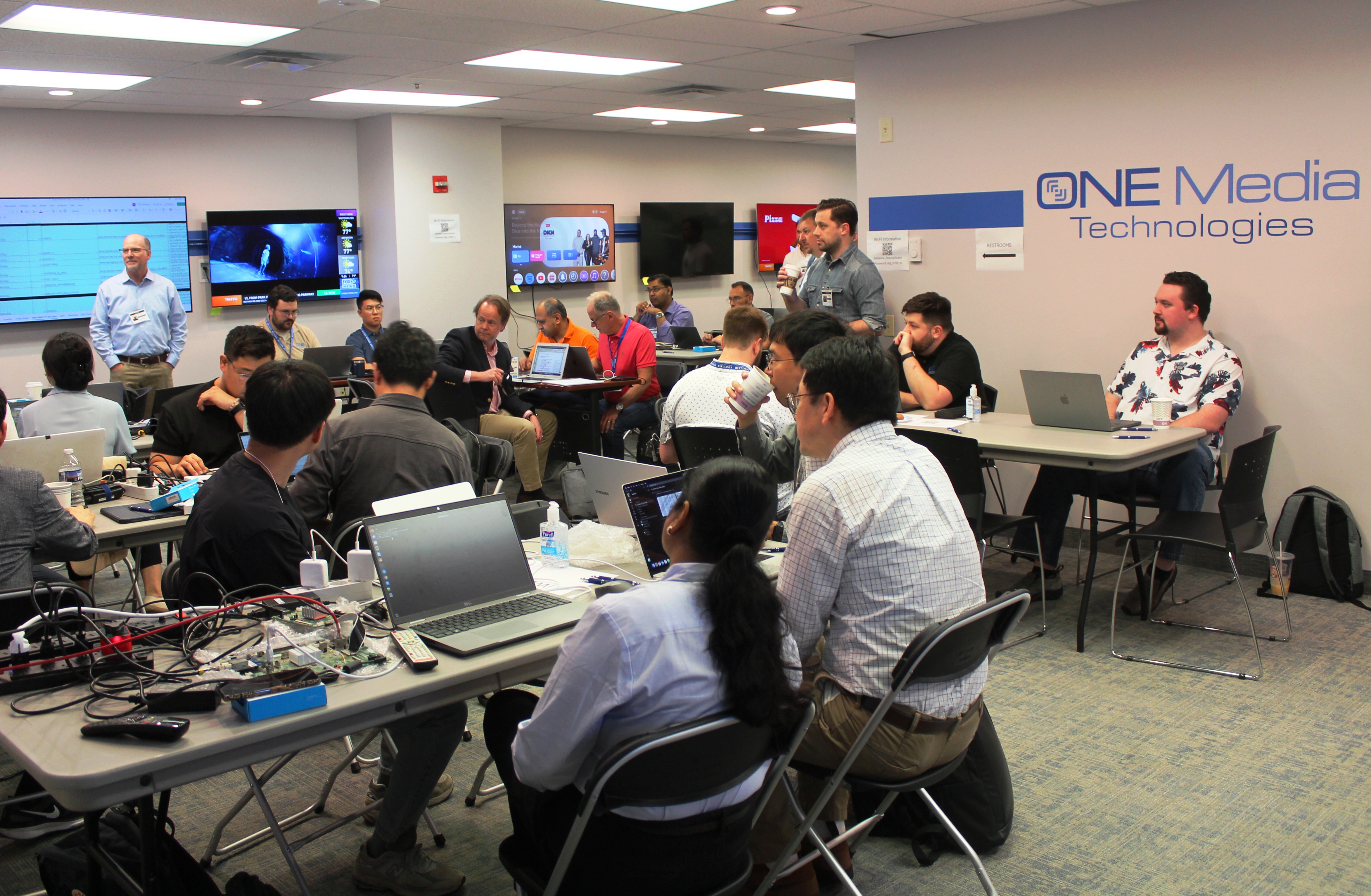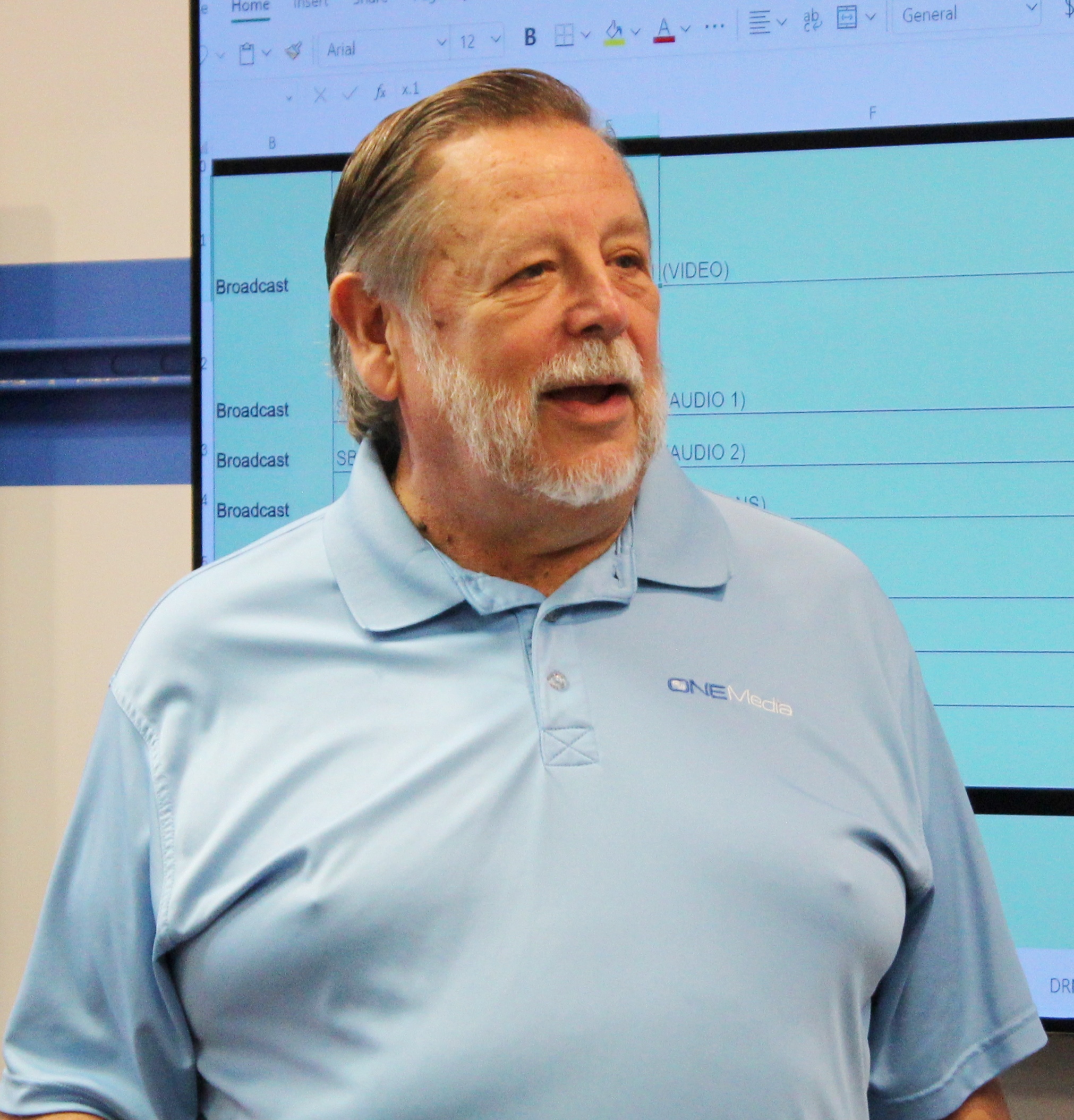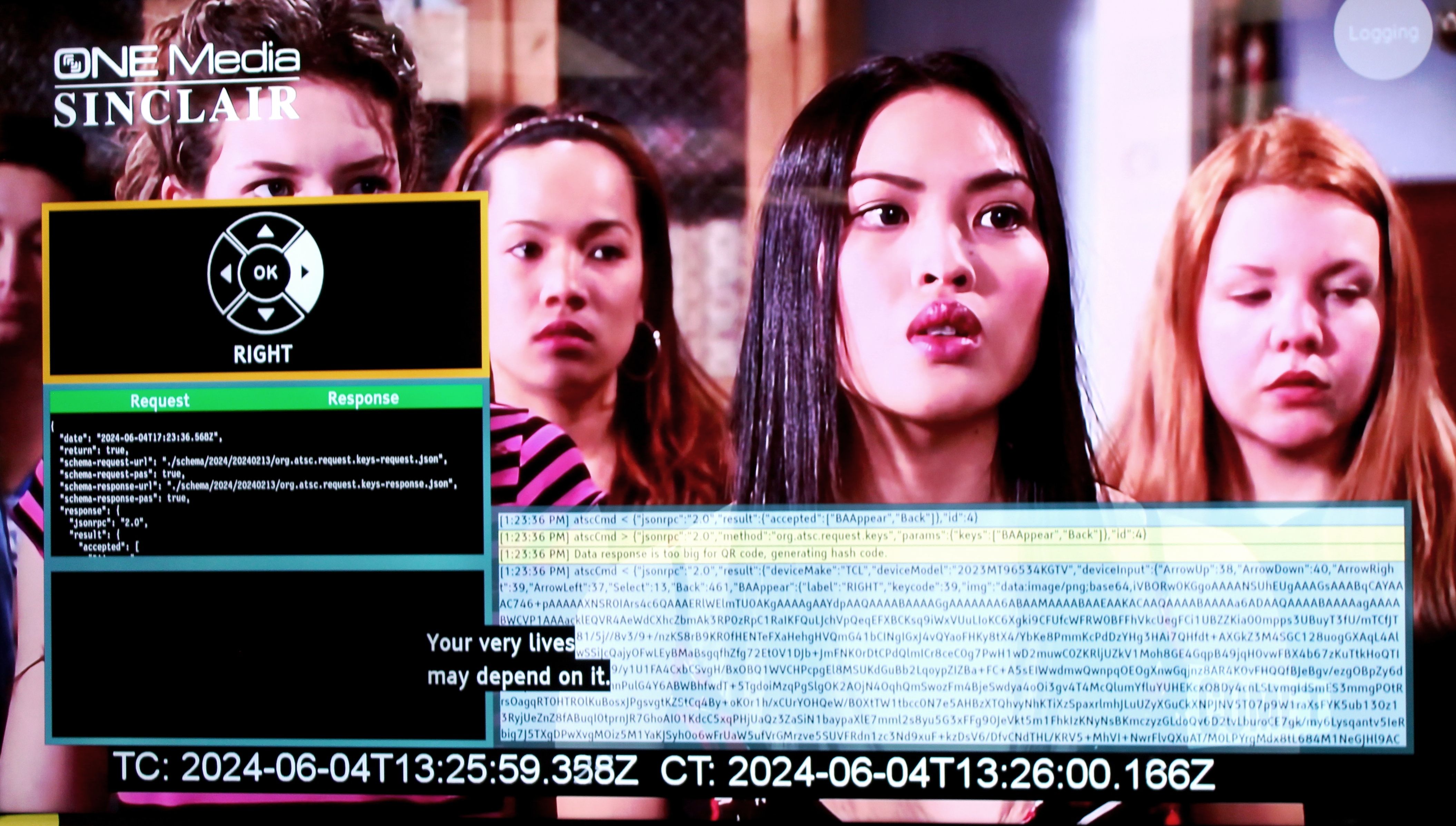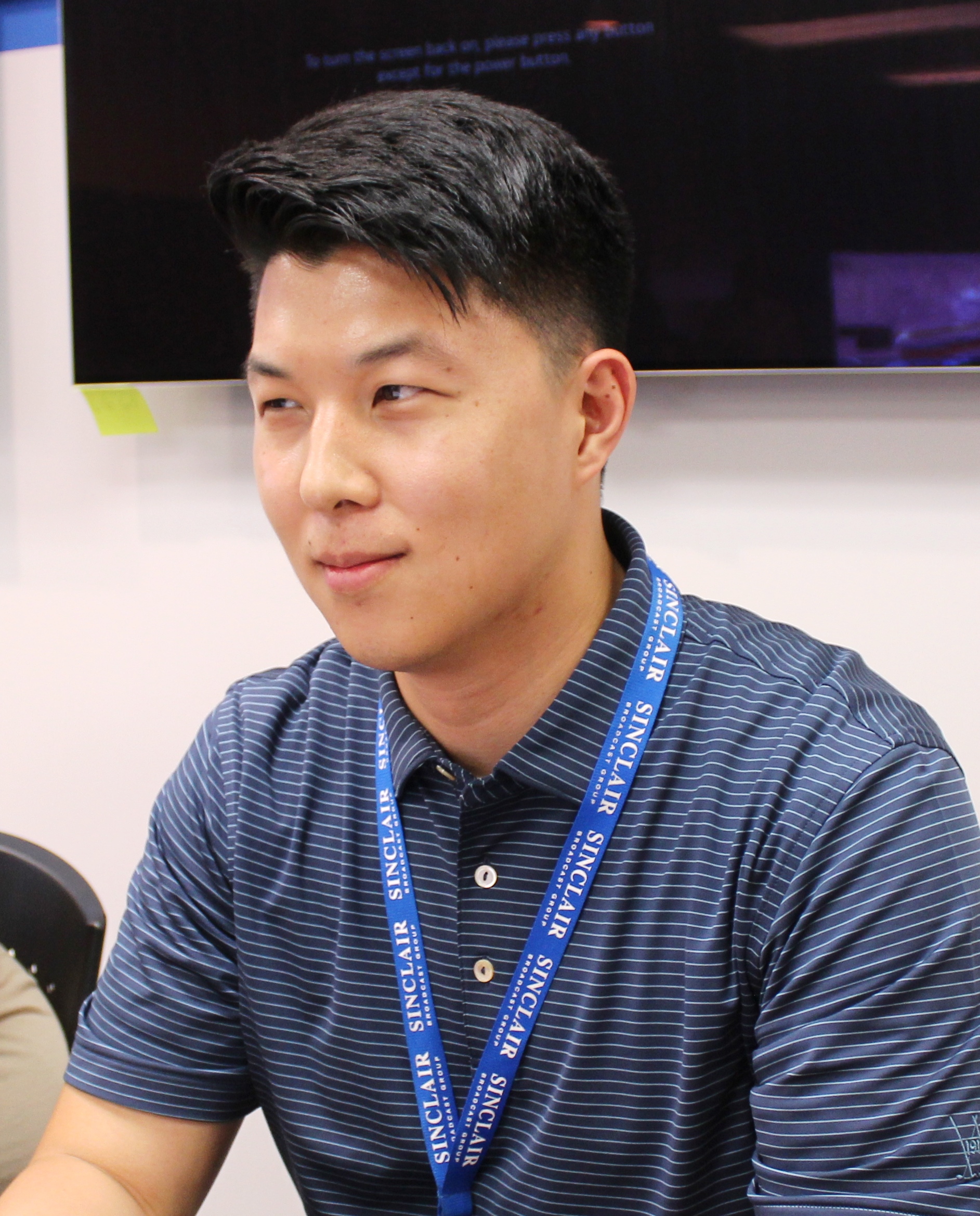Latest ATSC 3.0 ‘Plugfest’ Targets Transport, DRM, and More
Broadcast tech teams from around the world gather for 3.0 “Interop

COCKEYSVILLE, MD.—The Sinclair Broadcast Group, along with the Pearl TV consortium, hosted yet another ATSC 3.0 device interoperability test at the ONE Media lab at SBG headquarters in the Baltimore suburb of Cockeysville, Md., June 3-7.
The latest in a series of ongoing trials, this interop event was focused on such NextGen TV elements as digital rights management and signing in connection with MMT (MPEG Media Transport) and ROUTE (Real-time Object delivery over Unidirectional Transport), the Advanced Emergency Information broadcaster application, as well as basic interoperability testing of new models from TV set manufacturers.
According to Mark Aitken, SBG’s SVP of advanced technology, this is the sixth time Sinclair has sponsored an interop, the first occurring in 2016. It is also the first fully in-person testing event post-pandemic.

The testing sessions involved most of the major hardware and software players in the field of NextGen TV—some two dozen—including encoder technology providers, emergency alerting gear, test equipment and receiver manufacturers. In addition to providing the facility, SBG also distributed ATSC 3.0 off-air signals from Baltimore broadcasters to provide a real-world environment.
Jason Kim, ONE Media Engineer and coordinator of the event, said that literally thousands of tests were scheduled to be performed during the four-and-a-half-day event.
“There are many air chain equipment combinations—encoders, packagers, schedulers—with the ways things are implemented in each varying from vendor to vendor,” he said. “For instance, one encoder will be tested with a combination of all different packagers. By the time everything is finished), there will be thousands of different combinations trialed.”
What's Driving This 'Interop?'
With ATSC 3.0 now available to more than 75% of U.S. households, one might ask: Why is such continued testing necessary? Weren’t all of the pieces fitted together a long time ago? It works—why do we need more interoperability testing?
Get the TV Tech Newsletter
The professional video industry's #1 source for news, trends and product and tech information. Sign up below.
The answer is both “yes” and “no.” While NextGen TV is—and has been—informing and entertaining broadcast audiences, it was designed to be flexible and extensible in terms of feature sets and functionalities as the technology surrounding it evolves.
“There are parts of the standard that are in the ATSC’s ‘Candidate’ phase, and it’s usual before putting these to a full vote of the ATSC membership that the Candidate Standard be fully vetted,” Aitken said, adding that testing on some elements of the standard was intentionally sidelined as the new TV service emerged.

“MMT, which is one of two transport mechanisms in the standard, was put off for implementation intentionally by the big TV manufacturers,” he said. “We are now finalizing the MMT side of transport, particularly around security and DRM (digital rights management) and those related activities.”
Aitken added that a very important aspect of the security-related portion of plugfest testing this time involved “signing.”
“This is testing the certification by the broadcasters that it’s their content (signal and application), and also expiration of that certificate,” he said. “When in the process of exchanging this secure content along with DRM and the authorization to receive the content, the certificates expire,” he said… “and when those certificates expire—they are intentionally allowed to expire in this testing—we want to watch to see what happens to the various TV sets and set-top boxes.
“The whole purpose of security (signal and application signing) and DRM is to protect the user and the content, and the other side of the equation is that when the related certificates and DRM keys expire, you want to make sure that the sets operate normally and don’t get locked up,” he added.
Ensuring the New ‘Keys’ Fit All of the Existing “Locks’
Plugfest coordinator Kim noted that such compatibility testing is becoming more and more crucial as NextGen TV matures.
As we deploy more of the advanced features of ATSC 3.0, interoperability has become more important than ever,”
Jason Kim, ONE Media
“As we deploy more of the advanced features of ATSC 3.0, interoperability has become more important than ever,” he said. “Right now, we are deploying services that we weren’t able to with 1.0, so there are a lot of new features that we are deploying as part of ATSC 3.0 service. So, we want to make sure that all receivers can support the services we are providing.”
In describing the trialing, Kim observed that it begins with some basic or “baseline” testing as a generalized health check of receivers from multiple manufacturers.
“We call this ‘watch only’ TV,” he said. “It’s basically to see if all of the receivers function with over-the-air signals from our rooftop antenna. We want to baseline all the receivers that are here to ensure that they can support basic audio and video services. Once this is done, we go into different features that are now in production or that are going to be deployed.”

Kim said an important part of the testing for Sinclair was in evaluating “what we call ‘BEST (Broadcast-Enabled Streaming Television) Channel,’ where we are broadcasting the media presentation description over-the-air and the receiver is also pulling audio and video segments from a broadband connection.”
He noted that SBG has initiated this dual-delivery mechanism in some 40 markets over the past several months, but a few glitches were observed in the rollout.
“When we first deployed it, not every receiver supported it,” he said. “We are working together with the receiver guys that are here at the interop and with our broadcast air chain companies to make sure that our new BEST channel is supported by all receivers out there. We want to make sure what we are deploying can be received by all receivers.”
What's it Like at an Interop?
For those not familiar with plugfests, perhaps the best way to describe the environment as something akin to a college study hall, with individuals huddled over laptop computers and a generally hushed atmosphere. There’s an adjacent break room where participants are free to fortify themselves with snacks, coffee, and soft drinks.
What sets an “interop” event apart is that there are multiple (a dozen or so) wall-mounted large screen television receivers filling up most of the available lab wall space, and two distinct groups of players or teams—the “transmitters” and the “receivers”—continuously interacting with each other. The first group sends out various sets of computer code and the other attempts to decode it across multiple devices or device simulators. Such trialing is necessary to ensure complete compatibility between all hardware and software used in NextGen TV broadcasting.

Most of the communication among players is via computer keyboards and displays, with only an occasional “in-person” visit from a representative of one group with another when there’s a snag. Such events are essential in delivering an end-to-end digital television system that performs without any hiccups, as a very minor parameter change “upstream” has the potential to disable functions or even shut down operations in devices that are “downstream.”
Aitken noted that timing and location of this latest interoperability testing event was planned to facilitate attendance at the June 12-14 ATSC NextGen TV Broadcast Conference in Washington, D.C. by out-of-area plugfest participants—particularly those based outside the United States.
The plugfest attracted some 65 participants from seven countries, who represented some two dozen companies. These included ADTH, Airwavz, Alticast, Ateme, DigiCAP, DS Broadcast, DTV Innovations, Enensys, Gray Television, Heartland Video Systems, Hisense, Harmonic, iWedia, Koherence, Lowasis, NBC Universal, Pearl TV, Samsung, SBG, Sony, TCL, Triveni Digital, Vbox, and Verance.
James E. O’Neal has more than 50 years of experience in the broadcast arena, serving for nearly 37 years as a television broadcast engineer and, following his retirement from that field in 2005, moving into journalism as technology editor for TV Technology for almost the next decade. He continues to provide content for this publication, as well as sister publication Radio World, and others. He authored the chapter on HF shortwave radio for the 11th Edition of the NAB Engineering Handbook, and serves as editor-in-chief of the IEEE’s Broadcast Technology publication, and as associate editor of the SMPTE Motion Imaging Journal. He is a SMPTE Life Fellow, and a Life Member of the IEEE and the SBE.

